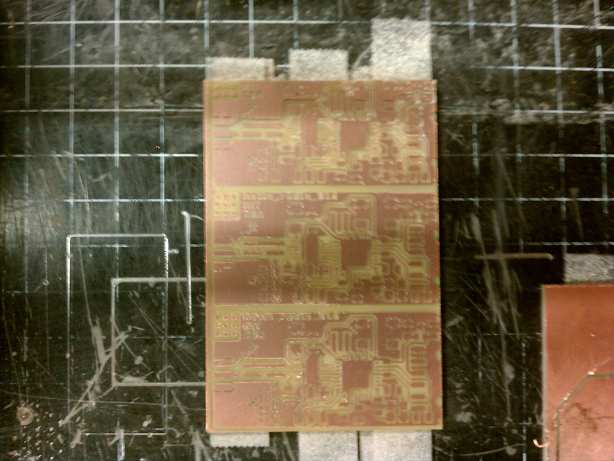Week12 - Networking and Communications
This week we finally delved into wireless communication and networked devices. Wired protocols as I2C and TWI, asynchronous serial, and apa are robust, reliable, and fast. But I wanted to build something wireless. I'd originally intended one of my final projects to Schrodinger's Box, which doesn't open until there's a message inside it. It's the ultimate from of encryption, the message doesn't even exist until it's ready to be parsed. Also, the box is locked. Yes, it's an empty locked box that doesn't open until the message it contains activates its opening. Take that Jean Paul Sartre! But to do this I would need some wireless networking devices. Finding few off the shelf, and that being against the spirit of the class, I decided to build the FabLab's "hello_radio," a simple (HA!) microchip radio that runs of SPI commands from a ATMega168, the same microcontroller in the Fabduino. In fact we've been calling the board the "Fabduradio." I went with the panelized traces to maximize the number of boards one could get out of a single piece of FR1. 3 is the answer. Sort of. If you're willing to lose about 1/32 of the very top board, which is fine in this design as the top is all ground plane to assist the flow of thee radio waves.

There was a small mix up with the parts ordered and one part, the 10MHz timing crystal that times the radio chip itself was not the original part the board had been designed for, hence it didn't fit quite right and would not make a solid connection. This left the radio chip without its timing pulse and would cause a board freeze up and other odd behaviors if you tried to transmit anything. Carefully debugging the source code file, walking through line by line until the freeze up indicated a problem with the radio chip timing. Once I showed the designer of the board the crystal we'd been given and how it doesn't fit right, he had me swap mine out with some from his personal stash and the board operated as expected. My board is running at 20MHz for the CPU, as I thought I might need the extra speed should I decide to use these radios and their RSSI values to build a location system of some kind. Below is a successful transmission from my left hand to my right hand. The red LED is TX and the green is RX.
So, until next time then, Space Cadets! NovySan, OUT!